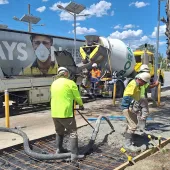Australian miners look to OEMs for aftermarket service

Lifecycle management the preferred arrangement for OEM service and maintenance contracts
MAINTENANCE and aftermarket services are playing an increasingly important role in the Australian mining sector, according to a new report by Timetric, a leading provider of online data, analysis and advisory services on key financial and industry sectors.
Following significant capital investment in new production capacity from 2008 to 2012, there is a new record in commodity production. This requires a much larger mining equipment fleet and hence a greater budget for parts and maintenance and aftermarket services.
When it comes to maintenance and aftermarket services, 67% of Australian miners say they prefer to work with their OEM in some capacity and very few want to be left alone to run maintenance and aftermarket operations independently.
Many mining operations rely heavily on key pieces of specialized equipment for the majority of their production, for example long walls and excavators. It is against this backdrop that the majority of Australian miners prefer to work with their OEM.
Some 97% of respondents purchase strategic parts, such as engines and ground-engaging tools, wholly or partially from the OEM. This compares with 78% who choose their OEM for non-strategic parts, even with the prospect of lower prices from third parties.
This preference for working with OEMs is further emphasized by lifecycle management contracts being the preferred form of service contract among Australian miners. They favour this not just for aftermarket support, but also for the sense of shared investment that miners feel a lifecycle management contract provides.
Timetric’s results also confirm recent investments made by major OEMs to increase their aftermarket servicing capability. For example, Joy Global built a designated servicing facility in New South Wales in 2012 to emphasize their Smart Services Solutions, whilst Sandvik opened a new repair and remanufacturing centre in Orange, New South Wales, in May 2014, with the stated aim of improving their aftermarket service.









